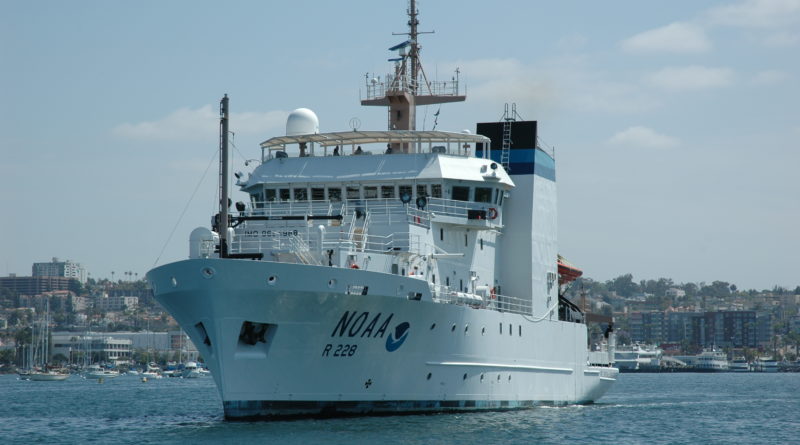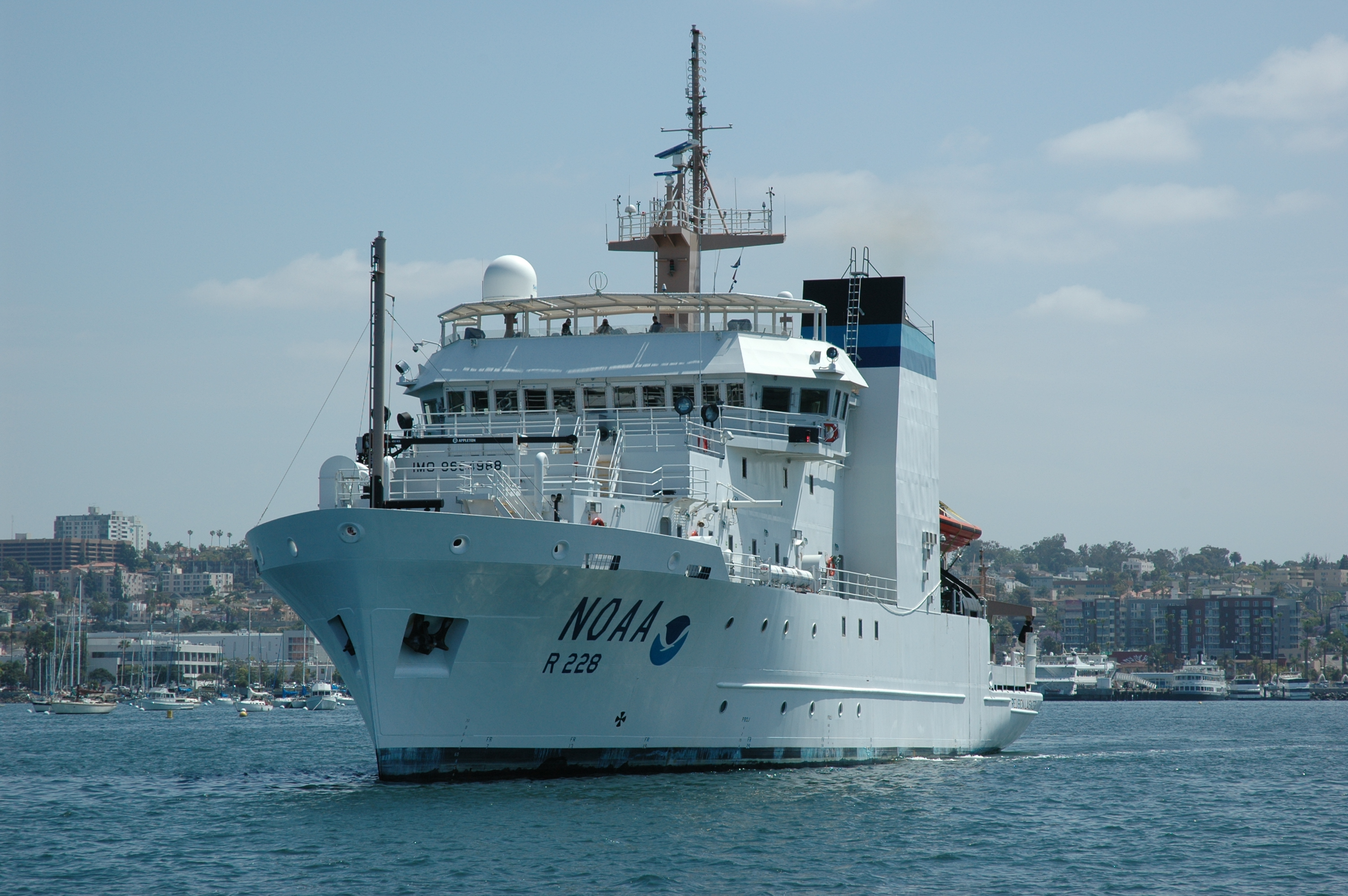NOAA’s newly commissioned Ruben Lasker sets out to sea
SAN DIEGO—The National Oceanic and Atmospheric Administration (NOAA) unveiled Ruben Lasker, a new state-of-the-art survey vessel, May 2 at a ceremony at the Navy Pier.
The 208-foot ship will assist officials in the surveys of fish, marine mammals and turtles off the West Coast and in the eastern tropical Pacific Ocean.
“It’s extraordinarily beneficial. Our old research vessel was retired in 2009,” said Roger Hewitt, the assistant director of NOAA’s Marine Mammal and Turtle Division of the Southwest Fisheries Science Center (SFSC). “We haven’t had a research vessel in the intervening years and in order to do our surveys we had to rely on other NOAA ships, university vessels, private charters, and any way we can get the job done. Now that we have a vessel back in service, we can get down to designing our surveys specifically to that vessel.”
The ship is the third in a series of vessels which NOAA has housed in the Southwest. The previous vessel, the David Starr Jordan, operated for nearly 50 years, Hewitt said.
Ruben Lasker allows scientists to study fish populations and collect oceanographic data, while minimizing the behavioral effects on fish and marine mammals with its low sound signature. Hewitt said this feature mitigates biasness in surveys with a reduction of animal disturbance and also provides a low signal-to-noise ratio for the acoustic sensors.
Multi-frequency scientific sonars also provide the ability to conduct acoustic surveys which can distinguish fish types, estimate biomass, determine fish school shapes and provide data on sea floor topography.
“This ship allows us to go out from 20 to 30 days at a time and cover large areas,” said Lisa Ballance, NOAA’s director of the Marine Mammal and Turtle Division of the SFSC.
“Additionally, the technology that is in this particular ship is much advanced compared to our prior ship. There are new bells and whistles that we’re really looking forward to using that will allow us to more effectively sample the ocean, the surface, and especially the water columns better than we’ve ever been able to do before,” she said.
The center will conduct its first official survey aboard the ship in late July, a 120 day trip throughout the Pacific region.
“The main goal of our cruise will be to collect data that will allow us to estimate abundance and distribution of all of the whales, dolphins and porpoises in the region,” Ballance said.
The vessel was funded through the American Recovery and Reinvestment Act and cost about $75 million to construct, according to David L. Hall, the public affairs officer in the office of Marine and Aviation Operation at NOAA. The ship was named after the late Dr. Reuben Lasker, a pioneering fisheries biologist who served as the director of NOAA SFSC’s coastal fisheries division and as an adjunct professor at Scripps Institution of Oceanography at UCSD.



